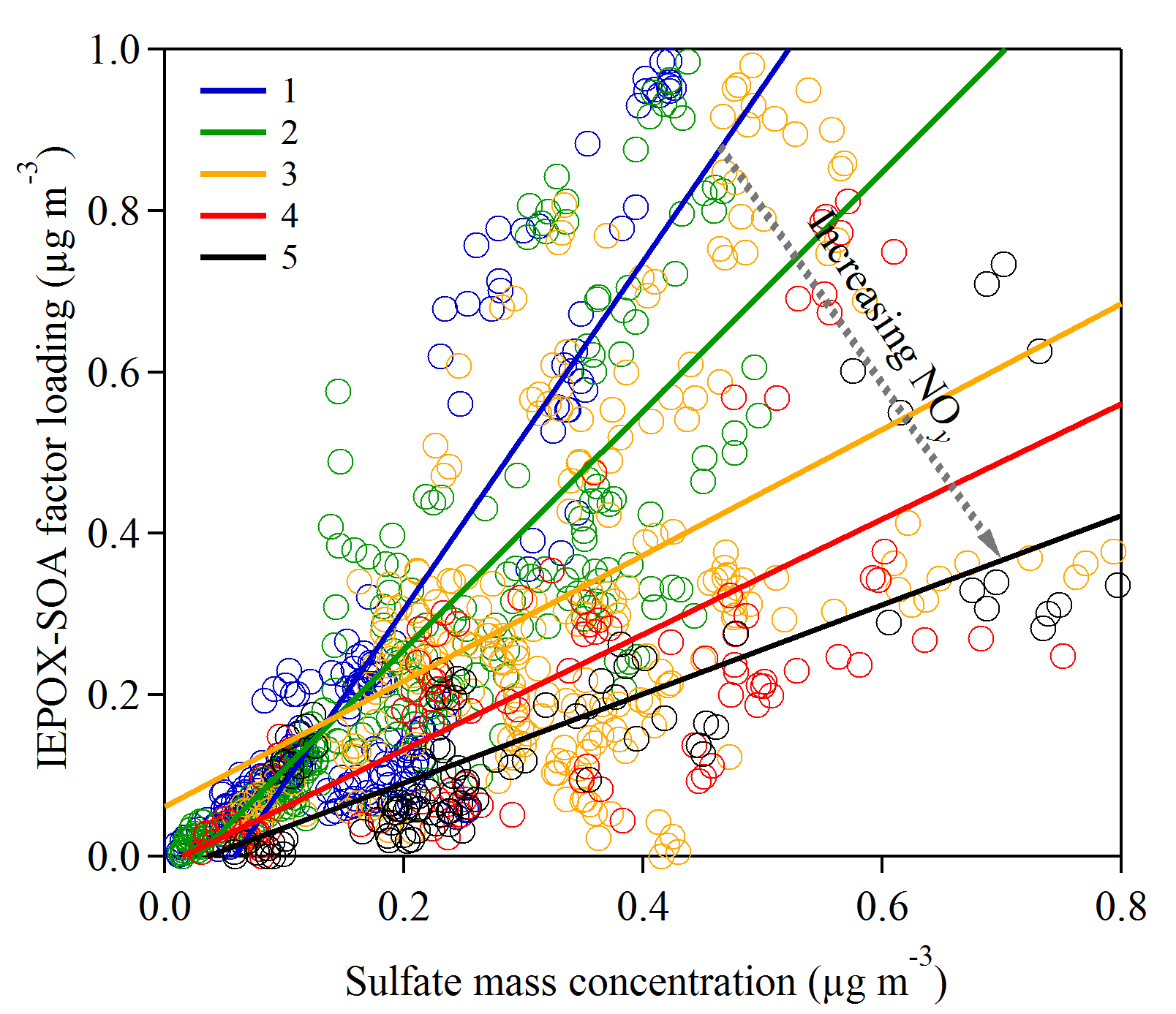Urban pollution affects the production of organic particulate matter from isoprene in Amazonia
Submitter
Martin, Scot T. — Harvard University
Area of research
Aerosol Properties
Journal Reference
Science
Isoprene is a major precursor to organic particulate matter (PM) over tropical forests. Isoprene epoxydiols (IEPOX), produced from isoprene peroxides under HO2-dominant conditions, is an important intermediate for production of PM. Using field measurements from a site 70 km downwind of Manaus, Brazil, this study investigated the influence of anthropogenic factors, namely concentrations of nitrogen oxides and sulfate, on the production of IEPOX-derived PM.
Impact
The results of the present study highlight the importance of oxides of nitrogen in shifting the composition of organic PM. Earlier studies in the southeast United States have pointed to the importance of sulfate and associated particle volume and acidity in favoring the production of IEPOX-derived PM. This paper reveals the important modulating role of nitrogen oxides on that production mechanism, thereby contributing to a more accurate understanding of the relative roles of sulfate and nitrogen oxides in affecting production of PM from isoprene.
Summary
Measurements took place in the wet season of 2014, as part of the GoAmazon2014/15 experiment. Mass spectra of organic PM collected with an Aerodyne Aerosol Mass Spectrometer were analyzed by positive-matrix factorization, and one resolved statistical factor (“IEPOX-SOA factor”) was associated with PM production by the IEPOX pathway. For the same sulfate concentration, the absolute and relative loadings of the IEPOX-SOA factor decreased by 2- to 3-fold under polluted compared to background conditions. On the one hand, enhanced sulfate concentrations in the pollution plume can increase PM acidity and volume concentration and thus favor IEPOX uptake. On the other hand, elevated NO concentrations in the pollution plume can reduce the production of IEPOX by intercepting radical intermediates of isoprene photooxidation, thereby ultimately reducing the production of IEPOX-derived PM. On a statistical basis, the pollution from Manaus elevated NOy concentrations more significantly than sulfate concentrations relative to background conditions. As a result, the suppressing effects of increased NO concentrations often dominated over the enhancing effects of higher sulfate concentrations. In the context of a developing Amazon, this result suggests that increased emissions of nitrogen oxides could significantly alter the amount and composition of PM in the region, thereby affecting air quality and climate.


